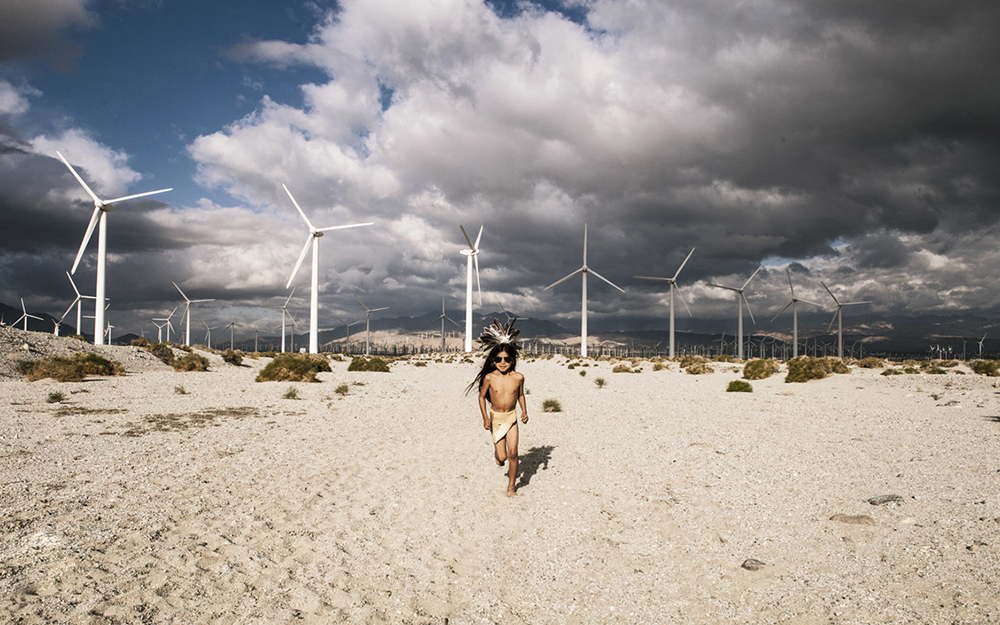
By Angela Romeo
Jackrabbit, Cottontail & Spirit of the Desert is part of the Desert X project. This installation is a series of billboards that runs along Gene Autry Trail between Via Escuela and Interstate 10 in Palm Springs. The installation is one of the most accessible however its location requires caution. Gene Autry Trail is a well-travelled road. Visitors should not be attempting to cross the road to view the installation.
The artist, Cara Romero, was born in Inglewood, CA in 1977 and was raised on the Chemehuevi Valley Indian reservation along the California shoreline of Havasu Lake. Her work is in film, digital, fine art, journalism, editorial portraiture and commercial photography.
But it is her deep connection to the desert and her Native American heritage that gives her work a compelling edge. Her work is often seen as narratives to an understanding of contemporary Native American life, shattering the stereotype of what is “Native American.”
Jackrabbit, Cottontail & Spirits of the Desert, is tied to native culture oral history. All cultures have a tie to oral history. It is one form of human communication, passing knowledge and culture from one generation to another. From fables to folktales, epic poems (who doesn’t remember Beowulf?) to nursery rhymes, hymns and more, oral history bridged and crossed generations. In Fahrenheit 451, Ray Bradbury used the concept of oral tradition to thwart the book burning and suppression of dissenting ideas. In his book a group of drifters have each memorized books should the day arrive that society comes to an end and is forced to rebuild itself, with the survivors learning to embrace the literature of the past. Bradbury said that he wrote Fahrenheit 451 because of his concerns at the time during the McCarthy era and as a commentary on how mass media was affecting the interest in reading literature.
In that vein Romero reaches back to the oral history to make her statement. She has stated that the installation is a response to the ancestral lands of the Cahuilla, Chemehuevi, Serrano, and Mojave people. The billboard images feature four “special time-traveling visitors from Chemehuevi who have come to the ancestral lands of their sister tribes in the Coachella Valley.” She further stated that in her vision, “these figures have returned to remind us of our deep connections to the land, the stories contained within it, and how we can live in relation to it. In terms of geo-logical and ancient social history, Palm Springs is a new city located in the ancestral lands of the Cahuillas with a rich history that predates colonization.”
To her the images in Jackrabbit, Cottontail & Spirits of the Desert are “manifestations of an oral tradition, bringing visibility to the individuals, cultures, and history that continue to inform this land-scape, whether or not they have been privileged in the long arc of our collective story.”
Romero’s work crosses the generations, one photograph at a time, reminding all of the duty to preserve these lands for the future generations.
For more information on Desert X visit desertx.org.













































